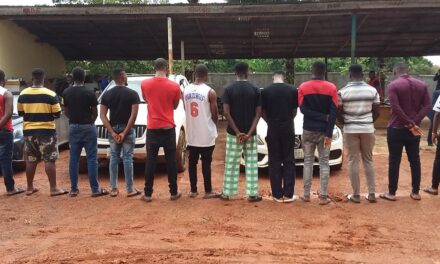How to bring Africa’s artifacts back home from Europe’s museums

Restitution and repatriation of sub-Saharan African art and cultural heritage in museums and private collections is an area of increasing global focus and debate.
Many of these works are in Western museums and were acquired by European countries from their former colonies particularly through armed pillage, military expeditions, missionary collections, and/or taken without sufficient documentation of consent or adequate compensation. Racist attitudes that underpinned colonialism have, for the most part, not changed, and this makes the debate contentious.
In November 2018, president Emmanuel Macron asked for a groundbreaking 258-page report during his tenure on the restitution of African art (The Sarr-Savoy Report), since major museums in the United Kingdom and France (the two major colonial powers) were not addressing the issue. The report was a positive step in the right direction; it is the first time a European leader acknowledged there was something wrong with Western institutions holding plundered works hostage. However, little concrete action has been taken since by France or the international museum sector since the report’s release.
Macron promised to return objects looted from their African homelands, starting with 26 artifacts from the Kingdom of Dahomey, now Republic of Benin, taken by colonial military leader Alfred Amédée Dodds in 1890. However, they have still not been sent back. The French culture minister reportedly asked heritage professionals at a recent symposium in Paris “not to focus on the sole issue of restitution”, but to instead emphasize cultural cooperation with Africa.
At present, there are questions as to whether the UK‘s efforts to address ongoing calls for repatriation of stolen artifacts will meet or exceed the bar set by France and Germany who have devoted considerable government resources and even more time developing their own guidelines.
The British Museum has remained intransigent about the issue of repatriation and has equally refused to pay restitution to the African countries whose artifacts are held in bondage. It has, however, entered into discussions with the Benin Dialogue Group (BDG), this is the Benin kingdom founded in the 12th century in southern Nigeria. The BDG, which includes museum representatives from Germany, the UK, the Netherlands, Austria and Sweden with partners from Nigeria, the Edo state government and representatives of the Royal Court of Benin with support of the National Commission for Museums and Monuments, Nigeria (NCMM) that was established in 2010 to craft a solution to this problem.
One realizes the prospect of colonial restitution is more complicated than anticipated. The response from Western museums and the BDG has been disparate, ranging from examples of unconditional restitution and repatriations to a lace of engagement with African communities. However, museum reps propose to loan items to African museums, which is insufficient. Christie’s and Sotheby’s ongoing auctions of historical African art are controversial as these artifacts could be candidates for repatriation to their countries of origin. This sidesteps the real issue of restoring full legal ownership and intellectual property rights of these artworks to their countries of origin.
Debates have also ignited among Western museum professionals who fear returning African objects are a sign that their precious collections would be gutted. This fear is unfounded since there are hundreds of thousands of objects from sub-Saharan Africa in these collections, of which only a fraction is on display at any time.
Many European museums and collections are currently protected by assertions of “inalienable and imprescriptible” right, prohibiting them from permanently handing over accessioned objects. UK museums do not have a single, agreed upon protocol for dealing with repatriation requests. The British Museum Act of 1962 prohibits an institution from disposing of objects in its collection except in very limited circumstances, and any effort to repatriate objects would require government action.
No permanent historical African artifacts should be kept in Western museums and collections while Africans have none of their own. Otherwise, Western museums will continue to condone the ongoing plunder of Africa of the past five hundred years, which aside from colonialism include the theft of African bodies for the gruesome Transatlantic Slave Trade. We should note that Western countries have also not offered any restitution for the suffering imposed on Africans by slavery, even though Britain paid its aristocracy reparations in exchange for giving up their slaves.

African consultants
What is to be done? African consultants with specific areas of expertise such as intellectual property rights lawyers and consultants, renowned African art historians, art conservators, and architects should be hired to create guidelines and for advice.
In the case of Nigeria, members of the Royal Court of Benin, Edo state and the NCMM are currently advising the BDG on how cultural patrimony from the Benin kingdom and Nigeria that are scattered around the world should be restituted and repatriated. They should secure the unconditional transfer of the intellectual property rights of its cultural patrimony to the rightful owners of said objects and offer a fresh perspective on how to address the legal complexities that govern the issues of return and restitution (e.g., license agreements for reproductions, royalties on artifacts awaiting repatriation, etc.). They should also obtain and review inventories from Western museums to identify artworks, cultural, and human artifacts that should be returned to the Royal Court of Benin.
The narrative for African artifacts remaining in possession of Western museums must also be redefined by providing insights from an African perspective. Africans should be able to see cultural artifacts of their own heritage in their own cultural contexts. Restitution and repatriation of the artifacts and cultural heritage would allow Africans to participate in interpreting their meaning. Without these steps, the debate will continue to lack concrete results.
Above all, any further discussion of this issue must secure Africans’ ownership of the intellectual property rights of their cultural patrimony as a future source of income in the digital economy, work with relevant institutions to ensure appropriate funding is available to successfully preserve and safeguard African artifacts that are to be repatriated. The discussions should also ensure any new museum built in Africa to house these works meets or exceeds prescriptions of the Alliance of Museum and/or International Museum standards.
Culled from Quartz

















































0 Comments